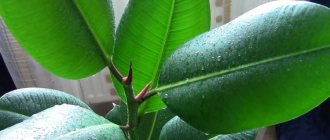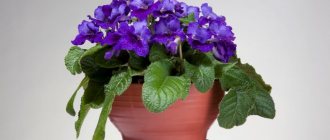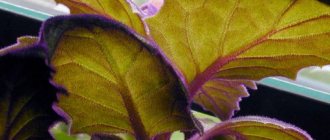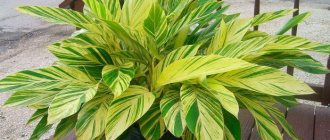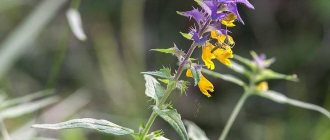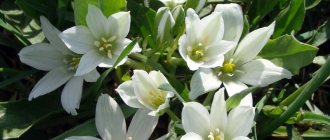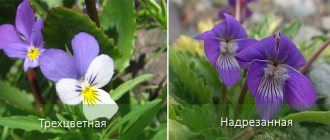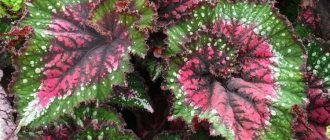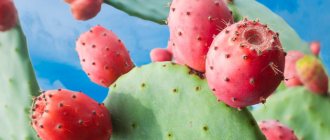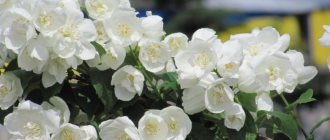Symbolism of Jasmine
The noble white color and delicate aroma have been valued by people since ancient times. They associated them with nobility, grace and benevolence.
Thus, in Christianity, jasmine is considered the flower of the Virgin Mary. In China, Thailand and Indonesia, jasmine symbolizes femininity and purity.
Indonesians call it “melati” and actively use it, for example, at wedding ceremonies. Among the Tatars, jasmine is considered a sacred plant - to get to heaven, a person must grow jasmine.
Medicinal jasmine
According to recent studies, the aroma of jasmine affects the nervous system, promoting the production of encephalins, resulting in a relaxed state.
So it helps with insomnia and acts as an antidepressant. Jasmine essential oil is an effective care product for dry, oily and sensitive skin. It improves blood circulation, helps with diseases of the respiratory, genitourinary and endocrine systems.
In addition, jasmine has proven itself in the treatment of headaches, liver diseases, and rheumatism.
Jasmine in landscape design
Fragrant and easy to trim, jasmine is indispensable as a hedge. Low-growing varieties are successfully integrated into rockeries, alpine hills and ridges. Jasmine also looks great near bodies of water, reflecting picturesquely in the water.
Hydrangea and spirea go well with jasmine. Climbing plants with garden jasmine combine clematis, actinidia, and climbing roses.
Frequently asked questions from beginning gardeners
Every gardener starts with trial and error. Therefore, advice from experienced people is important and valuable.
Why doesn't jasmine bloom?
Jasmine is so loved by gardeners for its fragrant blooms. But it happens that the bush does not bloom for a long time. The following factors may be the reason:
- young age of the plant;
- lack of lighting;
- lack of fertilizer and soil depletion;
- freezing of shoots in winter;
- incorrect and deep planting in open ground.
Are you growing garden jasmine?
Yes
No
Jasmine Chubushnik
Looking at the photo of jasmine, many call it mock orange, and vice versa. At the same time, all that unites the plants is white flowers and a honey aroma.
Let's see how these cultures differ:
- mock orange has harder wood, the stem of jasmine is flexible and soft;
- mock orange bark is gray or brown, jasmine bark is green;
- mock orange flowers are collected in racemes, jasmine flowers are collected in corymboses;
- a mock orange flower looks like a goblet, a jasmine flower looks like a tubular corolla with two stamens;
- The flowering period of mock orange is about 20 days, while jasmine blooms from 60 to 90 days;
- mock orange is winter-hardy, jasmine is heat-loving;
- After flowering, mock orange has a box of seeds in place of the flower, and jasmine has a berry.
Description and characteristics of the plant
Some people believe that indoor and greenhouse jasmine are the same plant, but this is not true. A shrub grown in a garden has a different origin than an indoor one. The garden flower, or more precisely mock orange, belongs to the Saxifraga family.
The only similarity with jasmine is its strong aroma. But when comparing the two smells of these flowers, you can immediately notice the difference in the shades and notes of the aroma.
Indoor jasmine belongs to the Olive family. This belonging to this class can be understood by the growth form and foliage of the flower.
The climbing flower is an evergreen shrub.
In addition, indoor jasmine is very difficult to care for indoors. To form a dense bush, it is necessary to build a support for flexible, clinging shoots. Growing branches will quickly entwine the support and hide it. Jasmine leaves have a beautiful regular shape. They are arranged on the petioles in pairs, forming a thick green crown. Flowers look simple and at the same time elegant. Simple, tubular or terry - they all include open, dissected corollas. They are divided into 6 identical petals, hiding almost invisible tubes underneath.
Axillary flowers are located in the axils of the leaves. The color palette is standard: the color of the petals of indoor jasmine is white and cream, sometimes pink and yellow. If we talk about indoor plants, we can note several of the most common types. The difference between them lies in the flowering, and the shape of the crown, the type of leaves and the length of the shoots are the same. Common indoor flowers include the following types of jasmine:
- Multi-flowered - has abundant branching;
- Large-flowered - reaches 10 meters in height and has bare shoots resembling a tree;
- Bisa is a shrubby evergreen climbing vine with long shoots;
- Holoflorous - has weak branching and rarely leafy shoots;
- Sambac is a classic and unpretentious species with shoots of medium length.
Jasmine in the garden
Garden jasmine is a shrub reaching 3 m in height and 2 m in crown diameter. Take this into account when planting and, based on the type of jasmine, select suitable “neighbors”.
When growing in the middle zone, choose frost-resistant types of jasmine. But remember that young seedlings in any case need winter shelter.
After transplantation, the bush requires quite a long adaptation; it usually blooms in the second or third year.
The main reasons for the appearance of aphids
Gardeners sometimes think that aphids appear on plants literally out of nowhere. In fact, there may be several variants of infection:
- An insect can fly, for example, from a neighboring garden plot. This is the so-called aphid migration, which occurs as a result of overpopulation of the colony.
- When planting new plants. Freshly purchased crops often become carriers of aphids. Before planting an “alien” in the garden, you need to check it for the presence of parasites.
- Open doors, windows. A common way for pests to appear. Indoor and greenhouse plants often suffer from such an invasion.
- Along with the soil. The larvae can attack plants through soil taken from the street. It is for this reason that new land should be disinfected.
- Aphids often appear in garden plots in the spring. New individuals hatch from eggs that have overwintered in leaf litter and soil.
Another possible cause of aphid infestation is the activity of ants. These insects are carriers of aphids, which are needed by ants, and aphids need garden workers. This is how a kind of cooperation is born.
Aphids secrete honeydew, a nutritious, sweetish liquid. Ants feed on it to maintain their workforce. If there are ants in the area, most likely, aphids will also settle there. Therefore, both types of insects need to be destroyed.
How to choose a place for jasmine?
Do you want your jasmine to bloom?
Then make sure that the jasmine grows in the most comfortable place for it. Firstly, the place for permanent planting should be sunny. Secondly, the site must be dry, without stagnant groundwater. Thirdly, it is better to avoid areas where there are strong winds and drafts.
Important: most varieties of jasmine love the sun, but some tolerate shade and partial shade, so when buying seedlings, be careful not to make a mistake. Match the jasmine planting location with its variety.
Reproduction methods
The snow-white, fluffy shrub can be propagated in three basic ways : layering, cuttings, and dividing the root system.
The last method is the most difficult, and the easiest way to propagate jasmine is using cuttings. Let's look at each in more detail.
Using cuttings
Cuttings should be prepared for propagation at the beginning of summer using a thin, sharp knife. A cutting ready for planting is a stalk no more than 6 cm high and has at least a pair of leaves on the sides.
Reproduction by layering
Two options for propagation by layering
Jasmine should be propagated using layering strictly in mid-spring.
Proceed as follows:
Dividing the root system
Propagating jasmine by division is quite labor-intensive work, so you should resort to this method only if your plant has grown around the perimeter and was intended as a hedge.
To propagate by dividing the root system, you need to dig up a bush and divide it into several equal parts , each of which has its own root system. Immediately after dividing, plant each of the divided parts of the shrub.
How to plant garden jasmine correctly?
Jasmine planting:
- dig up the top layer of soil;
- dig a hole with a depth of at least 50 cm and a diameter of at least 60 cm;
- loosen the bottom, if necessary, add drainage from crushed stone and sand;
- when planting in spring, add 50 g of nitrophosphate to the hole;
- after planting, compact the soil a little and water the plant generously;
- To preserve moisture, sprinkle the tree trunk circle with peat, humus or pine needles.
Experts recommend planting jasmine in the spring or, if you don’t have time, in the fall.
Life hack 7 We start fighting mealybugs as soon as we notice them
Mealybug
Insects adhere to the plant, and the formation of wax cocoons is noticeable on the foliage and stems.
Insects feed on plant sap, which leads to disruption of sap circulation.
It is necessary to fight defeat at the initial stage. Soak a cotton swab in a soapy solution and rinse all affected areas by hand.
Then I prepare a green soap solution. Grate fifteen grams of soap per liter of water. Treat the bush every two weeks.
Instead of soap solution, I sometimes use a tincture based on calendula or pharmaceutical alcohol.
If most of the plant is affected, folk remedies will not help. Use toxic substances: Vertimek, Fozalon, Actelik and Thiophos. For breeding, use the tips from the instructions. Spraying is performed every ten days.
How to care for garden jasmine?
Jasmine care:
- adjusting watering (do not over-moisten the soil, but at the same time ensure abundant watering in hot weather);
- loosening the soil in the root circle;
- removing faded flowers;
- spring feeding with a mineral complex of nitroammophoska or mullein infusion;
- after flowering - fertilize with wood ash or superphosphate;
- pruning, pinching and thinning;
- in case of infection with aphids or spider mites, treat with an intexicide.
Little fertilizer
The plant takes root well, gains growth and delights with lush flowering only in fertile soils. In an area with poor soil, growth will be greatly slowed down, and if there is a severe deficiency of nutrients, the plant will simply begin to dry out. If you are just going to plant shrubs on your site, listen to some of the recommendations presented below.
If you have already encountered a problem when your bush has begun to dry out, try feeding it with complex fertilizer formulations or replanting it in a new place, following the rules described below. It is also recommended when planting (transplanting) to use the “Grandis” rooting agent - powder the roots of the plant with it and add a little product (following the instructions) to the planting hole. The drug stimulates the growth of the root system and strengthens the plant’s immune system.
Important! Do not use fresh manure as organic fertilizer.
-
there is a risk that it will cause burns to the root system.
Experienced gardeners most often prepare the soil for planting themselves. To do this, take equal quantities of garden soil, leaf soil, humus, and peat and mix well. The planting hole is filled with this composition. It is also recommended to immediately add fertilizer to ensure good survival of the jasmine. 1 bucket of humus and 1 kg of wood ash are added to each planting hole.
Next, the bush is fed with mineral and organic fertilizers. The first feeding is done in the spring - in early May. To do this, prepare a nutrient solution of 40 g of superphosphate, 15 g of potassium sulfate and 15 g of urea. All products are diluted in a bucket of water and the soil is watered generously along the entire perimeter of the bush crown.
We recommend that you familiarize yourself with the features of growing and caring for indoor jasmine.
The next fertilizing is introduced after flowering. 100 g of wood ash, 30 g of superphosphate and 15 g of potassium sulfate are diluted in 10 liters of water. This composition will help the plant regain its strength and ensure good bud formation for the next year. You can also use complex mineral formulations such as Kemira Lux or Uniflor Micro. Organic fertilizers are also useful for jasmine. Every year, a solution of manure liquid is applied under the bush - the product is diluted in water in a ratio of 1:10.
What you need to know about homemade jasmine
Homemade jasmine is quite capricious and whimsical, so if you want the plant to feel comfortable at home, you will have to take into account a large number of factors.
Be careful! Due to the high concentration of essential oils, the smell can sometimes cause headaches, especially in small spaces.
Subtropics at home
Jasmine comes from the subtropics, which means it loves light, warmth and humidity. The best place in the house for it would be a bright, spacious room. At the same time, you should avoid direct sunlight and artificial lighting.
The temperature in the room where home jasmine is located must be maintained at 18-24˚C. At the same time, it is important to ensure high humidity and absence of drafts. It is recommended to spray the crop regularly.
Jasmine does not tolerate lime very well, so for quality care of jasmine, take care of the quality of the water. Warm rainwater, boiled or filtered water is ideal. Let the water sit before watering.
Special attention
Tropical plants like these need plenty of light, so this is something to think about carefully and make appropriate changes to the room's layout.
And a species such as Mali Chat no longer needs strong lighting and can live in partial shade; it is quite convenient to combine different types of plants in one room. An abundance of light will promote more flowers and beneficial shoot development.
The green mass also needs this resource no less; in the daytime, sunlight will provide a sufficient amount of light and there is no need to use special screens for protection. But this is only possible with an eastern or western window sill.
Seasonal care for indoor jasmine
Indoor jasmine is sensitive to changing weather conditions, and therefore requires different care in the summer and winter seasons. The plant does not tolerate dry soil and air, so during dry and hot periods it requires abundant watering and spraying.
In winter, humidification should be reduced and commensurate with the room temperature. It is important to maintain light moisture in the substrate, allowing the middle layer of soil in the pot to dry.
How to maintain indoor jasmine
Home jasmine prefers acidic soil. Support the plant with mineral and potassium fertilizers, especially from mid-spring to late summer, as at this time the plant is actively gaining weight.
It is advisable to replant a young plant once a year, and an adult plant once every 3 years. In this case, be sure to use drainage and ready-made soil mixtures.
Chemicals
Black aphids appear on jasmine in early spring, so it is necessary to begin active action before the leaves bloom. Jasmine should be sprayed with broad-spectrum insecticidal preparations. They destroy insects within 24 hours and retain their properties for up to 30 days.
Timely treatment of jasmine in early spring provides the plant with protection from aphids for the flowering season. Spray again at the end of summer. You can use tools such as:
- drug Iskra;
- Karbofos;
- drug Tanrek;
- Aktellik;
- Actara remedy.
Jasmine is one of the most common garden shrubs. The plant pleases with long flowering, pleasant, rich aroma. To see all this beauty, you need to monitor the condition of the bush and take timely measures.
Photo of jasmine
Total
Category: Flower beds and flower beds
